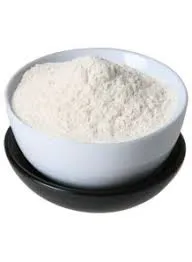
ಆಕ್ಟೋ . 19, 2024 06:02 Back to list
HPMC Thickener Applications and Benefits in Various Industries
Understanding HPMC Thickener Applications and Benefits
Hydroxypropyl Methylcellulose (HPMC) thickener is a versatile and widely used ingredient in various industries, including food, pharmaceuticals, and cosmetics. As a non-ionic cellulose ether, HPMC is derived from natural cellulose sources, which undergo chemical modifications to enhance its properties. This article delves into the significance, applications, and benefits of HPMC thickener.
What is HPMC?
HPMC is a white, odorless powder that is soluble in cold water but not in hot water. It functions primarily as a thickening, binding, and film-forming agent, making it an important additive in various formulations. One of the standout features of HPMC is its ability to form a gel-like substance when mixed with water, which helps in achieving desired viscosity levels in different products.
Applications of HPMC Thickener
1. Food Industry HPMC is commonly used as a thickener, emulsifier, and stabilizer in various food products. It improves texture and consistency in sauces, dressings, soups, and ice creams. By controlling the viscosity and preventing ingredient separation, HPMC enhances the overall quality and shelf-life of food items.
2. Pharmaceuticals In the pharmaceutical sector, HPMC is used as a excipient in tablet formulations and drug delivery systems. It serves as a binder, disintegrant, and controlled-release agent, ensuring that medications are released at a consistent rate. Its properties allow for the formulation of sustained-release tablets, which contribute to improved patient compliance and therapeutic efficacy.
3. Cosmetics HPMC is also utilized in the cosmetics industry for its thickening and stabilizing qualities. It enhances the texture and feel of creams, lotions, and gels, making them more appealing to consumers. Additionally, HPMC is known for its skin-conditioning properties, making it a beneficial ingredient in skincare formulations.
4. Construction In construction, HPMC plays a crucial role as an additive in mortars, plasters, and tile adhesives. It improves workability, adhesion, and water retention, ensuring that construction materials can be applied effectively and maintain their integrity over time.
hpmc thickener

Benefits of HPMC Thickener
1. Versatility One of the primary advantages of HPMC is its versatility across various industries. Its ability to serve multiple functions—thickening, binding, and stabilizing—makes it a valuable ingredient in numerous applications.
2. Natural Source Being derived from cellulose, which is a natural polymer, HPMC is considered a safer alternative to synthetic thickeners. Its non-toxic nature makes it suitable for food and pharmaceutical products.
3. Unique Properties HPMC exhibits unique rheological properties, which allow manufacturers to finely tune the viscosity of their products. This characteristic is especially beneficial for applications that require precise consistency.
4. Compatibility HPMC is compatible with a wide range of formulations and ingredients, which makes it easier for manufacturers to incorporate it without altering the overall stability of their products.
5. Biodegradability HPMC is biodegradable, making it an environmentally friendly option compared to many synthetic thickeners that may contribute to pollution.
Conclusion
In summary, HPMC thickener is a multifunctional ingredient that plays a significant role across various industries. Its versatility, safety profile, and unique properties make it an essential component in formulations ranging from food products to pharmaceuticals and cosmetics. As industries continue to evolve, the demand for effective and environmentally friendly thickeners like HPMC is expected to grow, solidifying its place as a staple in manufacturing and product development.
-
Unlocking the Benefits of HPMC Products: A Gateway to Versatile Applications
NewsAug.07,2025
-
Unleashing the Potential of HPMC Ashland: A Comprehensive Look
NewsAug.07,2025
-
Tile Bonding Cellulose: The Key to Superior Adhesion and Durability
NewsAug.07,2025
-
Hydroxypropyl Methylcellulose Powder: The Versatile Component in Modern Pharmaceuticals
NewsAug.07,2025
-
Hydroxyethyl Cellulose: The Versatile Solution for Various Industries
NewsAug.07,2025
-
Hydroxyethyl Cellulose (HEC): The Versatile Polymer for Various Applications
NewsAug.07,2025







